Gaming laptops are complex machines with sometimes overwhelming specs and marketing terms to wade through. It makes it hard to choose a model, especially when you’re spending potentially thousands of pounds but our best gaming laptops chart will guide you to the right one.
We’ve reviewed and ranked lots of different models for you to choose from at a range of different prices, sizes and specs. Including brands like Asus, Alienware, Razer, HP, Lenovo and more.
In 2021, laptops are arriving with specs such as 11th-gen Intel processors, Nvidia GeForce RTX 30 graphics cards or the latest AMD Ryzen 5000 series. We’re always testing and adding new models so keep an eye out for new entries.
Best gaming laptops 2021
Asus ROG Strix G15 (2021) – Best Overall

- Pros
- Plenty of power
- Impressive 300Hz display
- Nice keyboard
- Cons
- No webcam
- No card reader
- Slightly chonky
There’s a lot to like about the surprisingly affordable Asus ROG Strix G15. Despite its mid-range price, it includes up to an Nvidia GeForce RTX 3070 graphics card and AMD Ryzen 7 5800H processor.
It’s well-placed to tackle triple-A games, fast eSports titles and tough content-creation workloads, and elsewhere this machine has a butter-smooth 300Hz display and a comfortable, crisp keyboard. It’s even pretty cool and quiet.
The relatively low price means that it misses out on some features and it’s a little thicker and heavier than other machines, but those are not dealbreakers on this excellent mid-range machine.
Read our full Asus ROG Strix G15 (2021) review
Alienware m15 Ryzen Edition R5 (2021) – Best Keyboard
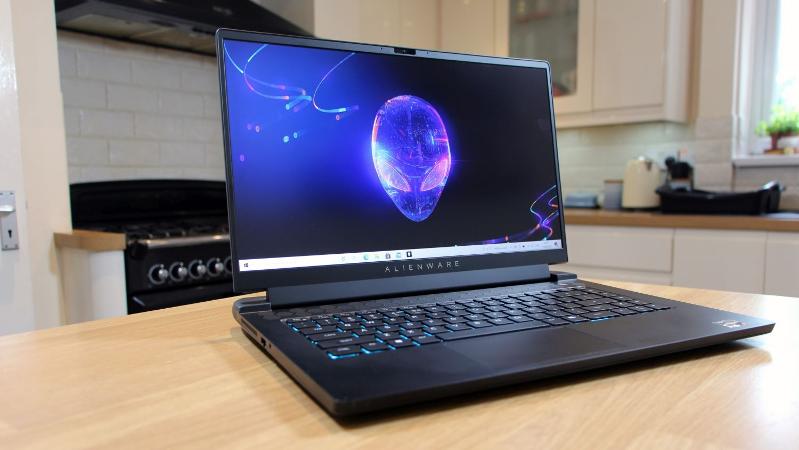
- Pros
- Great gaming speed
- Satisfying keyboard
- Excellent AMD chip
- High-quality 165Hz display
- Cons
- Underwhelming trackpad
- No Thunderbolt
- Poor speakers
The m15 Ryzen Edition R5 is one of the most affordable Alienware models on the market right now, and that means it has to concentrate on the basics.
And, for the most part, this machine succeeds: it’s got solid mainstream gaming power alongside an excellent processor, and it has a great screen, a satisfying keyboard with Cherry MX option and good looks. Connectivity isn’t bad, either.
The relatively low price does mean compromise, though. The speakers and trackpad disappoint, battery life could be better and this machine does get hot. It’s missing a handful of features, too. That makes it a good mainstream laptop, but it won’t go further than that unless you spend more cash.
Read our full Alienware m15 Ryzen Edition R5 (2021) review
Asus ROG Zephyrus G14 – Best 2020 Model
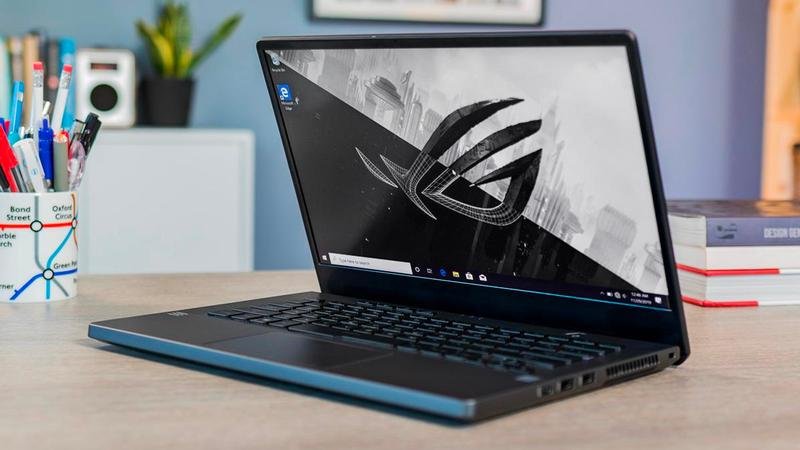
- Pros
- Strong graphical performance
- Compact design
- Great display options
- Cons
- Patchy keyboard backlighting
- Fans can be noisy
- No webcam
The ROG Zephyrus G14 marries gaming laptop clout with ultrabook sensibilities in one of the most compact and powerful gaming laptops we’ve ever seen.
A tip of the hat has to go to the thermal design of this compact machine, which can accommodate up to a Ryzen 9 4900HS, 32GB of DDR4 RAM, up to a 1TB M.2 NVMe SSD and, most impressively, Nvidia GeForce RTX 2060 Max-Q graphics.
There’s also the matter of this machine’s ‘AniMe Matrix’ LED-laden lid, which can display images, text, equalisers and even animated GIFs – perfect for adding a touch of character and personalisation to your machine or as a means to silently trash-talk your competitors during competitions.
Read our full Asus ROG Zephyrus G14 review
Acer Predator Helios 300 (2020) – Best Value Intel
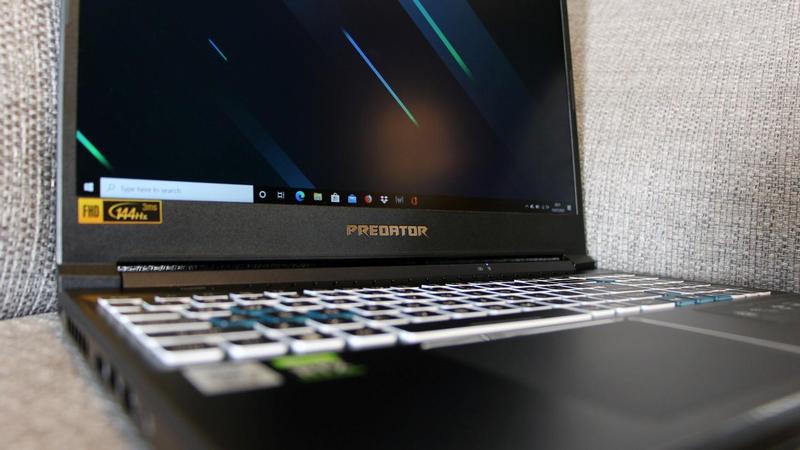
- Pros
- Good gaming speed
- Solid Intel chip
- Keyboard and connectivity
- Cons
- Battery life
- Screen quality
- Quite chonky
The Helios 300 for 2020 is another well-rounded gaming laptop from Acer offering a nice mix of components and features.
If you just need the kind of pace for mainstream titles and eSports then the 10th Gen Intel and CPU and Nvidia GeForce RTX 2060 GPU is a solid combination. And games will be displayed on the smooth 144Hz display.
While the price undercuts many rivals there are a few downsides to consider including lower screen quality beyond that refresh rate, mediocre battery life and a pretty chunky design. If they worry you then look elsewhere for a little more finesse, although likely at a higher price.
Read our full Acer Predator Helios 300 (2020) review
Acer Nitro 5 – Best Budget 17in
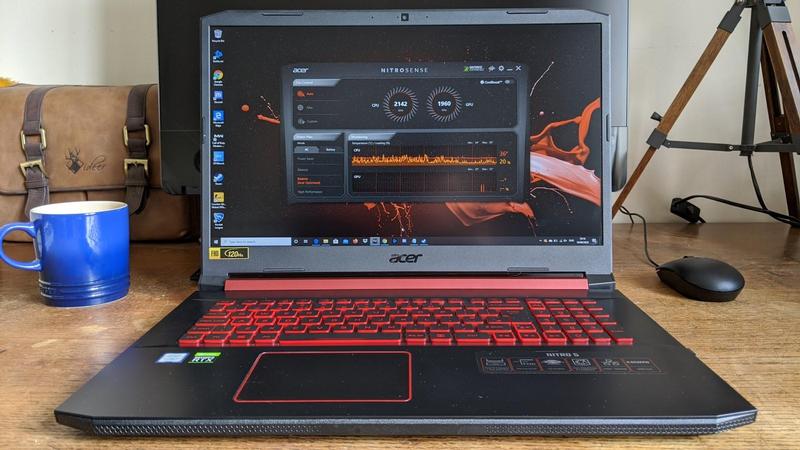
- Pros
- Smooth gaming performance
- Big 120Hz screen
- Affordable
- Cons
- Poor colour reproduction
- Chunky design
If you’re looking for performance on a big laptop for a budget price then the Acer Nitro 5 is a great shout.
This offers an Nvidia RTX 2060 and a large 17in display for under a grand meaning it can keep up with more expensive gaming laptops. There are plenty of ports and a nice keyboard too.
While the display is 120Hz, it lacks in colour so games can look dull. The chassis is chunky too so this is an affordable desktop replacement for those not too fussed about the colour accuracy of the display.
Read our full Acer Nitro 5 (A517-51) review
Alienware m17 R4 – Most Powerful 17in
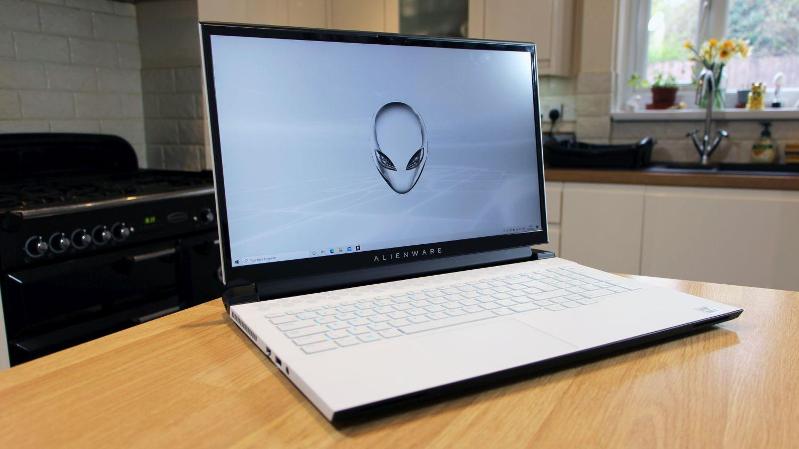
- Pros
- Fantastic gaming speed
- Eye-catching design
- High-quality keyboard
- 360Hz display
- Cons
- Very expensive
- AMD chips are faster
- Mediocre trackpad and speakers
The addition of an Nvidia GeForce RTX 3080 makes this one of the fastest notebooks on the planet, and the Intel processor, fast memory and storage and solid internal connectivity make this a barnstorming machinery.
Alienware bolsters the components with a stunning 360Hz display, a great keyboard (with optional Cherry MX switches) and an eye-catching design making it one of the best 17in gaming laptops you can buy.
That’s if you can afford it though and it has a middling trackpad and speakers. It’s also heavy and noisy – and battery life is poor. But none of that is a surprise, and it’s not unique to the m17.
If you’ve got the cash, this is the fastest gaming laptop you can buy, and its design is superb. We’d only look elsewhere if you want more CPU power from an AMD processor.
Read our full Alienware m17 R4 (2021) review
Gigabyte Aero 15 OLED (2021) – Best Screen
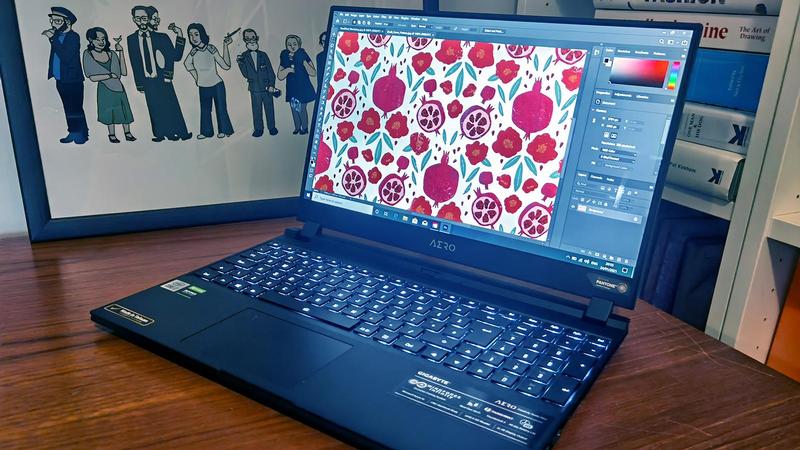
- Pros
- Great performance
- Fantastic screen
- Sleek design
- Cons
- Average speakers
- Poorly positioned webcam
It might not be marketed as a gaming laptop but the Aero 15 OLED has the components for it and then some – an RTX 3070 with a Core i7-10870H at the least – only with a display that’s designed for creative tasks.
This is an amazingly sleek and portable, yet powerful laptop which will suit those looking for a single machine to handle complex work tasks such as video editing and then, once work is over, some of the latest AAA games. That’s if you’re ok with a refresh rate of 60Hz.
You can drop down to a Full HD display with 144Hz refresh rate but we’d recommend going for an OLED model if you can afford it – especially if you need the performance of this stunning display which can achieve 100% of the P3 colour space.
It’s just very expensive, hence the position in this chart.
Read our full Gigabyte Aero 15 OLED review
Razer Blade Stealth 13 (late 2020) – Best Portability
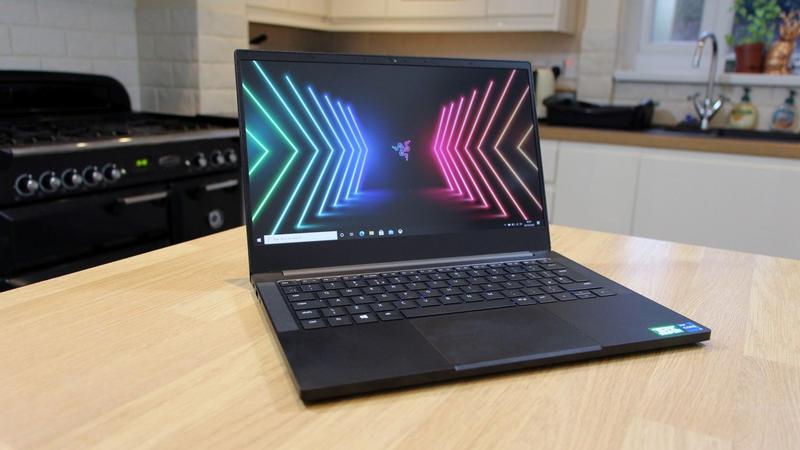
- Pros
- Solid gaming pace
- Sturdy, lightweight design
- Great 120Hz display
- Cons
- Intel CPU beaten by AMD
- Disappointing keyboard
- Expensive
The Blade Stealth 13 has been updated late in 2020 to fit 11th-gen Intel chips.
As you might expect, Razer offers impressive mainstream gaming power inside a light, slim and sturdy case with a top-notch 1080p screen – if you need a lightweight machine for gaming and eSports, it’ll cope.
However, the concentration on svelte design means the Razer has an underwhelming keyboard, an Intel CPU that’s regularly beaten by AMD and a very high price – so you’ll get a more rounded machine if you’re not set on the black and green of Razer.
Read our full Razer Blade Stealth 13 (late 2020) review
HP Omen 15 (2020) – Best Value AMD
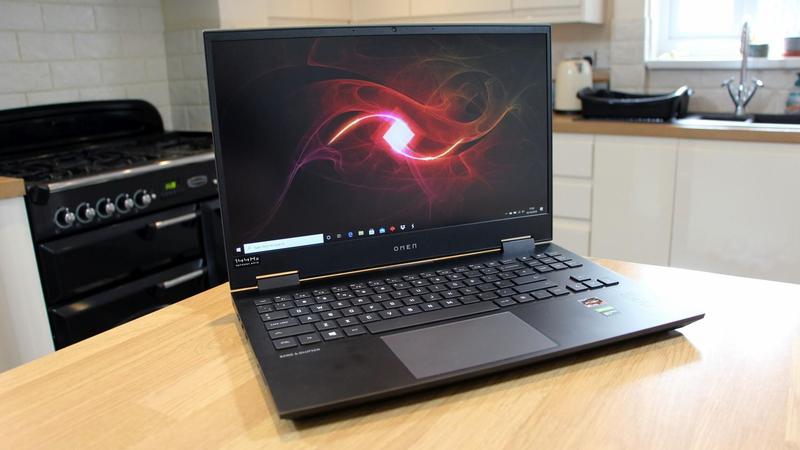
- Pros
- Fantastic CPU power
- Solid GPU
- Affordable
- Nice design & connectivity
- Cons
- Underwhelming screen
- Soft keyboard
- Mediocre battery life & build
The HP Omen 15 (2020) is affordable, and it balances a decent GTX 1660 Ti graphics card with a superb AMD Ryzen 7 processor.
There’s plenty of performance here and you can jump to an RTX 2060 for not much more. We also like the new design and the range of ports on offer.
It’s a decent option for a portable gaming laptop without breaking the bank. The screen is mediocre, though, and other areas like the battery life and keyboard leave us wanting a little more. Buy it for the power hidden under the bonnet.
Read our full HP Omen 15 (2020) review
Lenovo IdeaPad Gaming 3i – Best Budget
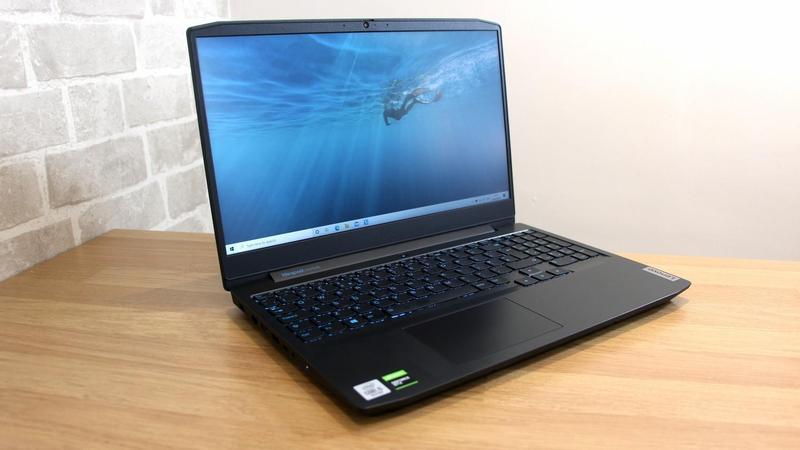
- Pros
- Extremy cheap
- Decent performance
- Good-looking
- Solid keyboard
- Cons
- Washed out screen
- Limited ports
- Some basic specs
If you just need a cheap gaming laptop then the Lenovo IdeaPad Gaming 3i is a reasonable choice.
It’s certainly a lot cheaper than the vast majority of machines on the market. In fact, it’s more affordable than some non-gaming laptops and has a decent amount of power for mainstream gaming thanks to a GeForce GTX 1650 and a Ti isn’t much more.
The Core i5 chip is good enough for day-to-day use and the 3i also offers an attractive design and nice keyboard.
Downsides at this price are namely the feeble screen (despite the 120Hz refresh rate) but also include a small SSD, poor trackpad and limited selection of ports.
Read our full Lenovo IdeaPad Gaming 3i review
Your buying guide for the best gaming laptops in 2021
There are plenty of things to consider when on the market for a respectable gaming laptop.
You need a capable CPU, a graphics chip that is powerful enough to deliver your games as the developers intended them, enough system RAM to keep applications stored in memory, high-capacity and fast storage drives to hold games and other files, a sizeable and decent-resolution screen to view the action on, and a good chassis to bear all these components.
With that in mind, we’ve broken down our buying advice by component to help you figure out what to look for. Oh, and if you’re open to buying a powerful laptop that’s not been designed specifically for gaming, check out our guide to the best laptop.
Which processor is best?
From Intel, the latest generation of Core processor is a good idea for the best performance and longevity. However, opting for the previous year’s model can save you a lot of money if you find a laptop reduced in price due to its age.
It’s not old, it’s just not the latest model so tends to get discounted to clear stock. These days AMD Ryzen chips are outperforming Intel if CPU performance is high up your wish list.
As ever, our benchmark results provided within our reviews will tell you how quick a particular laptop is at various tasks.
Read our Intel vs AMD comparison.
Which graphics card should I choose?
The graphics card is arguably the most important component of a gaming laptop, as it does most of the work when you’re playing a game. Unlike with a desktop PC, you can’t usually upgrade the graphics card in a laptop, so it pays to get the best you can afford to begin with.
Laptops with Nvidia GTX graphics chips are the older models but still provide decent performance. You’ll see the ‘Max Q design’ versions of these cards largely as they are created to fit inside the chassis of a laptop, although some occasionally have a proper card.
If you want the latest tech then look for GeForce RTX cards for improved performance along with features like ray tracing. They’re just more expensive, of course.
Also bear in mind that AMD is very much back in the game these days and have plenty of Ryzen chips and Radeon GPUs that are top quality.
What screen do I need?
Laptop screens have improved in recent years, with screen resolutions now settling at full-HD (1920×1080), and using better technology than the basic TN type found on cheap portables. Look out for IPS panels, which offer wide and consistent viewing from all angles, better contrast ratio and wider colour gamuts.
Don’t be misled by boasts about screen brightness – contrast ratio, especially at lower brightness settings, is far more important than dazzling your eyes with 300nits figures.
It’s also easier to find screens now with more practical anti-glare finishes, reversing the trend of high-gloss reflective panels that were once unavoidable from most brands.

And you can usually ignore the trend for greater-than-HD resolution since many graphics processors struggle with Ultra HD (4K) screens. For most…
